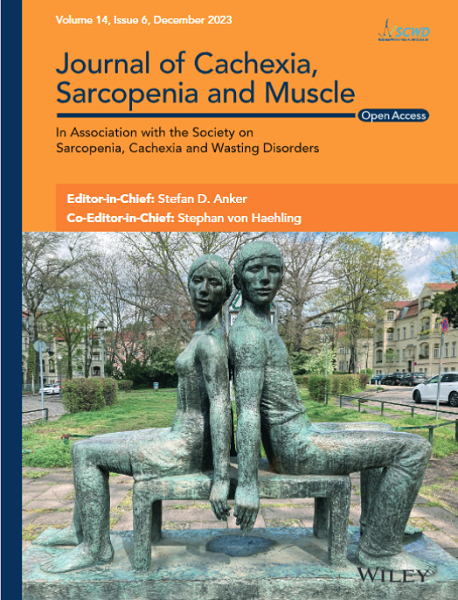Estimated Glucose Disposal Rate Associated With Risk of Frailty and Likelihood of Reversion
Abstract
Background
Estimated glucose disposal rate (eGDR) is a simple and effective measure for insulin resistance, which is associated with higher risk of frailty. We aim to analyse the associations of eGDR with frailty risk and its reversibility.
Methods
A population-based longitudinal study was conducted of 11 670 participants from the China Health and Retirement Longitudinal Study and 19 355 participants from the Health and Retirement Study. Frailty was assessed by the frailty index and reversibility was measured by transitions from frailty at baseline to non-frailty during follow-up. The eGDR was divided into Q1, Q2, Q3 and Q4 according to the quartiles. Multi-state Markov model was performed to evaluate the effects of eGDR on transitions among non-frailty, frailty and death. Cox regression model was used to estimate eGDR associated with the risk of frailty and the likelihood of reversion.
Results
In Chinese population characterized by a median age of 60 years (IQR: 54–66) with 6119 women (52.43%), compared with the Q1 level of eGDR, participants exposure to Q3 and Q4 level decreased the probability of transitioning from non-frailty to frailty by 22% (HR = 0.78, 95% CI: 0.69–0.88) and 25% (HR = 0.75, 95% CI: 0.66–0.86), respectively. But its Q2, Q3 and Q4 levels increased the probability of transitioning from frailty to non-frailty by 24% (HR = 1.24, 95% CI: 1.06–1.44), 39% (HR = 1.39, 95% CI: 1.19–1.64) and 33% (HR = 1.33, 95% CI: 1.13–1.58). In American population with a median age of 63 years (IQR: 56–72) and 11 189 women (57.81%), its Q2, Q3 and Q4 levels decreased the probability of transitioning from non-frailty to frailty by 17% (HR = 0.83, 95% CI: 0.77–0.89), 24% (HR = 0.76, 95% CI: 0.70–0.82) and 46% (HR = 0.54, 95% CI: 0.49–0.59), respectively. The probability of revising frailty increased by 25% (HR = 1.25, 95% CI: 1.13–1.38), 36% (HR = 1.36, 95% CI: 1.22–1.51) and 48% (HR = 1.48, 95% CI: 1.30–1.69) for levels Q2, Q3 and Q4. As shown in the prospective analysis, increased eGDR levels from Q2 to Q4 were associated with decreased frailty risk and higher likelihood of reversion, as evidenced by the dose–response relationship revealed by restricted cubic spline analysis.
Conclusions
Higher levels of eGDR were associated with a reduced risk of frailty, delayed transition from non-frailty to frailty and an increased likelihood of reversion. eGDR emerges as a promising predictor for early frailty detection, prognosis assessment and a potential therapeutic target for intervention strategies.


 求助内容:
求助内容: 应助结果提醒方式:
应助结果提醒方式:


